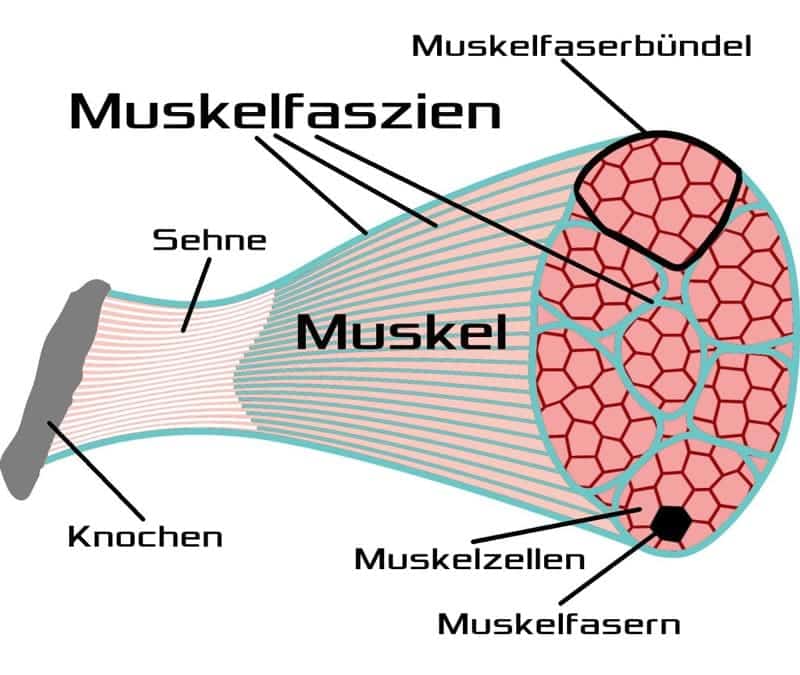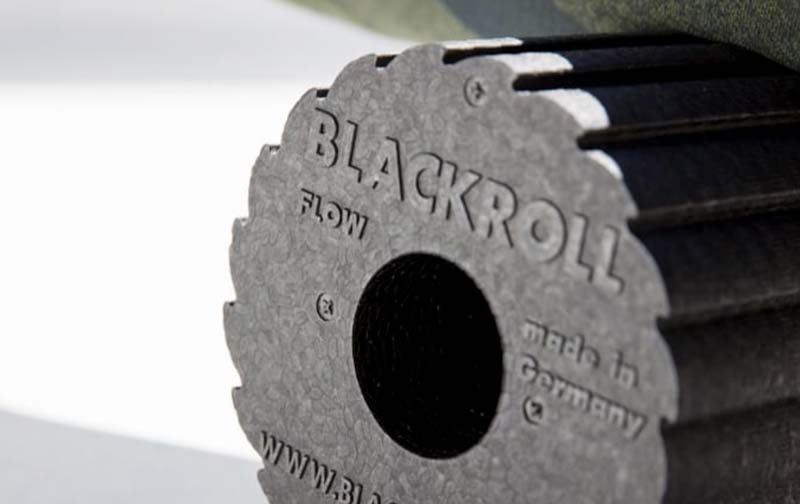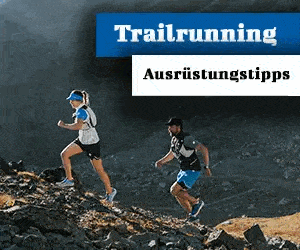Faszien and their importance for sports activities are on everyone's lips. Whether and how the fascia must be taken into account during training is explained to us by Katharina Völker from target10a in the following guest article.
A guest post by Katharina Völker from target10a.com
In recent years, fascia has received more and more attention in medical research. Some of you may already have heard of fascia. In this article we would like to take a closer look and show what the fasciae for climbing and the body in general bring.
What is meant by fascia?

Fascia are bundles of connective tissue. These are fine connective tissue skins that form a filigree network. They protectively cover all organs, muscles and muscle fiber bundles and run through the whole body.
The fascial tissue consists of an aqueous base substance, which is mainly composed of proteins. In addition, it contains various cell types called fibroblasts. These produce collagen, preferably where forces occur. In anatomy books you can see the fascia as a white structure that rests on or pulls through the muscles. Anyone who has ever freed a piece of meat at home in the kitchen from tendons has correctly separated the muscle tissue from the white fascia.
What is the function of fascia?
Fascia gives the body its shape. They fix the body parts in the right place and connect them with each other. Fascias have an ordering function. However, they are so flexible and dynamic that they can be moved and adjusted as needed.
- Fascia keeps the body in every position and in resilience
- They form the bridge between the rigid bones, tendons and the flexible muscles
- They transfer the forces from the muscles to the skeleton
- They are considered the largest sensory organ in the body
- They contain the largest number of receptors and nerve cells, which, among other things, respond to mechanical stimuli such as pressure and tension and serve the perception of pain
Why is fascia training important?
Healthy fascia are moist and slippery and in lively exchange with the surrounding fluid tissue. Out of this fluid dynamic, they can flexibly adapt to the most varied movement requirements and glide freely over the muscle in many places. Incorrect or unilateral loading may cause the fascia to harden and lose its elasticity.
If the fasciae become stuck or hardened, this can lead to a wide variety of symptoms - from joint pain to neck, shoulder, back or abdominal pain to indefinable pain. For the fascia to remain stable and elastic, they need movement. Otherwise, it matts, sticks or hardens its structure, the body loses mobility.
In order to restructure the network of fascia and to make the elastic and elastic tissue, targeted movement therapy and massages help. The connective tissue is extremely receptive to squeezing, pulling and kneading. Stretching exercises and light jumping exercises can also help to keep the connective tissue elastic and to continue to perform its important functions.
Comprehensive fascia training consists of four sections:
1. Fascial Release (self-massage with the faculty role)
The training principle Fascial Release First and foremost, the goal is to solve hardened and bonded fasciaes with the help of a Faszienrolle, The role and body weight put pressure on the fascia tissue. This pressure causes tensions in the tissue to be compensated. With regular use of the fascial role, the fasciae slowly become more elastic again.
2. Rebound Elasticity (catapult effect)
The principle of Rebound Elasticity based on the catapult effect of the fascia. Fasciae are able to store energy and then release it. In certain movements, the fasciae are preloaded, for example when putting on the foot while walking. As soon as this tension discharges, for example when the foot is raised again, a greater force is released than by muscle power - just like a rubber band that is pulled apart and then released. In fascia training, the catapult effect is trained through springy jumps, push-ups on the wall or other sweeping movements.
3. Fascial Stretch (Stretch)
In the Fascial Stretch the fasciae are stretched. It is about varied units with dynamic, bouncy-rocking or slow, supple stretching movements. Stretching should not be done until muscles and tissues have warmed up. Jerky and fast movements only after a small warm-up to prevent injuries.
4. Sensory Refinement
The fascial net not only holds the whole body together but is also an important sense organ. Therefore, the fourth principle in fascination training involves movements that involve feeling into the body and improving body awareness. Who makes yoga or Pilates, so also has a perfect Faszientraining. But also through the conscious execution of the movements within a fascia training the body perception is automatically trained.

So you integrate fascia training into your next session
Select at least one exercise from each area per workout: rebound elasticity, fascial stretching, relaxing exercises with black roll (Fascial Release), fluid movements (fluid / sensory refinement). Warm up for a few minutes beforehand, such as running on the spot or jumping rope. Exercise twice a week, preferably not on consecutive days, as it comes in the 24 hours after the load to the so-called refill, that is, new fluid runs through the fascia tissue and makes it supple.
Get the Blackroll for your fascia training
By means of the black roll tensions in the fascia tissue can be compensated and thus the performance of the muscles can be significantly improved.
—
Credits: picture Magnus Mitdbo, Text Katharina Völker - target10a



